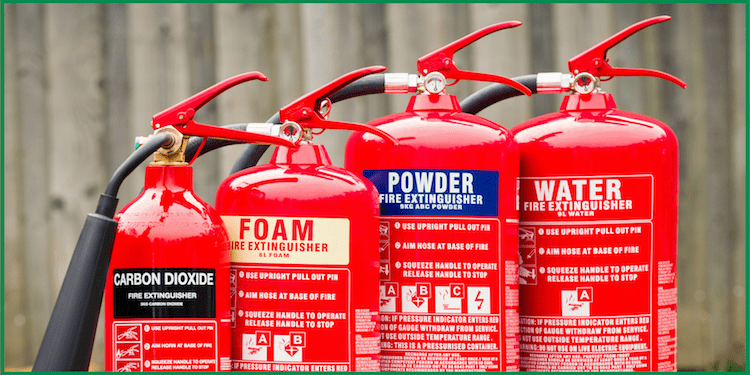Fire extinguishers are essential to fire safety in any building or facility. Fire extinguishers’ primary purpose is to help control or extinguish small fires before they become too large to handle.
This article discusses the different types of fire extinguishers, how to use them effectively, and some general fire safety tips.
TABLE OF CONTENTS
- Types of Fire Extinguishers
- How to Use a Fire Extinguisher
- Essential Fire Safety Tips
Types of Fire Extinguishers
There are several other types of fire extinguishers, each designed to handle specific types of fires.
Utilizing the correct type of extinguisher for the fire you’re trying to control or put out is essential, as using the wrong type can worsen the fire.
Here are the four most used types of fire extinguishers, which are also available for purchase on Amazon.com website:
- Class A: The primary function of these fire extinguishers is to quench small fires involving ordinary combustibles, such as wood, paper, or cloth. They use water or a water-based solution to extinguish the fire.
- Class B: These fire extinguishers eliminate small fires involving flammable liquids, such as gasoline, grease, or oil. They use foam or a dry chemical to terminate the fire and prevent it from spreading.
- Class C: Putting out small fires involving electrical equipment, such as computers, televisions, or wiring, is the primary purpose of these fire extinguishers. They use a non-conductive agent to extinguish the fire and prevent electrical shock.
- Class D: Smothering of small fires involving flammable metals, such as magnesium, titanium, or sodium, is the primary function of these fire extinguishers. They use a dry powder to douse the fire and prevent it from reacting with oxygen.
How to Use a Fire Extinguisher
Using a fire extinguisher is relatively simple, but following the correct steps is essential to ensure your safety and the extinguisher’s effectiveness.
Here’s a step-by-step guideline on how to use a fire extinguisher:
- Pull the pin: The first step is to pull the pin at the top of the extinguisher; it will release the locking mechanism and allow you to use it.
- Aim at the base of the fire: The next step is to aim the nozzle at the base; this is the fuel source location, so targeting it will help extinguish the flames more effectively.
- Squeeze the handle: Once you’ve aimed the nozzle at the base of the burning fire, squeeze the handle to release the extinguishing agent. Keep your distance from the fire, and move closer only if necessary.
- Sweep from side to side: Finally, sweep the nozzle from left to right and right to left, covering the entire fire base with the extinguishing agent. Continue until the fire is entirely out, and keep an eye on the area to ensure it doesn’t reignite.
Fire Safety Tips
While fire extinguishers are an essential tool in fire safety, it’s even more important to prevent fires from happening in the first place.
Here are some general fire safety tips to keep in mind:
- Install Smoke Detectors: Smoke detectors are essential for alerting you to the presence of a fire. Ensure you have a smoke detector and alarm installed throughout your home or facility, and test the systems regularly to ensure they’re working correctly.
- Keep Flammables Away from Heat Sources: Flammable materials, such as gasoline or cleaning solvents, should be inventoried and stored in a cool, dry place away from heat sources like furnaces or water heaters.
- Don’t Leave Cooking Unattended: Cooking is one of the leading causes of home fires. Always stay in the kitchen when cooking, and keep flammable materials away from the stove.
- Have An Escape Plan: Just in case of a fire emergency, it’s essential to have an escape plan in place. Ensure everyone in your home or facility knows and has practiced the plan.
Do you enjoy this reading? Kindly share with family, friends, and colleagues. Thanks 🙂



